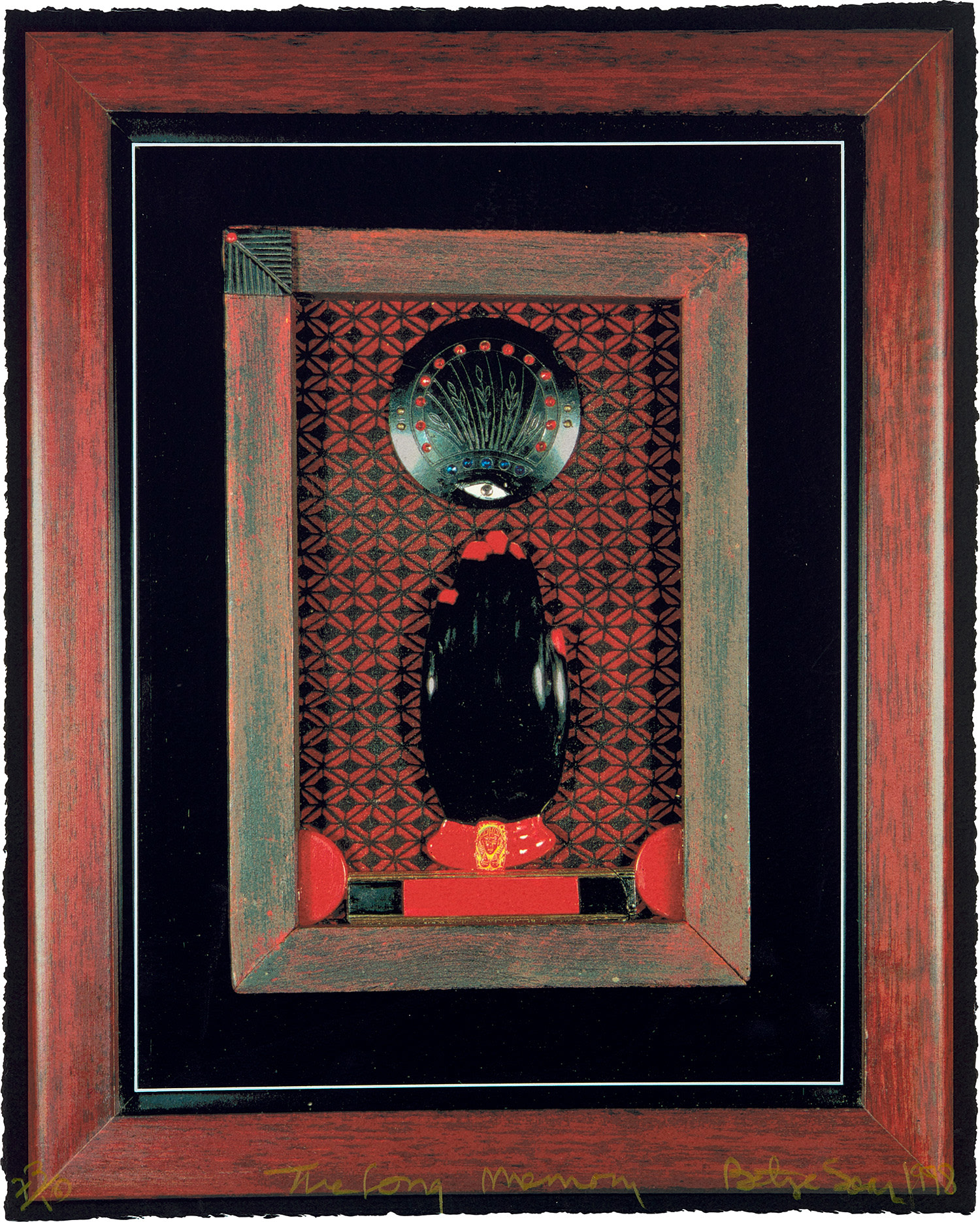

285
Betye Saar
The Long Memory
Betye Saar
American | 1926Betye Saar’s work coalesces the “personal” with the “political”, utilizing the intimacy of nostalgia and assemblage to address social inequalities and cultural issues. An instrumental participant in many 20th century artistic moments – including the Black Arts Movement of the 1970s and feminist art – Saar began creating politically-charged collages and assemblages after the assassination of Martin Luther King Jr. in 1968. Since then, her art has tackled the realities of racism and sexism and has been a mode of processing outrage.
Her technique of salvaging objects at yard and estate sales and transmuting them into three-dimensional contained spaces was influenced by the small-scale intimate box works of Joseph Cornell, an exhibition of which Saar visited at the Pasadena Art Museum in 1967. Cornell’s impact on Saar’s oeuvre is particularly conspicuous in Domestic Life, 2007, which is composed of miniature figures confined by a bird-cage; however, while her predecessor experimented with the fantastical world of Surrealism, Saar’s assemblage addressed the current reality of oppressed identities. “Cages were about incarceration,” she asserted. “Racism is a cage that still prevails.” The exaggerated features of the trapped figures evoke racist stereotypes and depictions of African Americans and their captivity might allude to Paul Laurence Dunbar’s poem Sympathy, in which a caged bird symbolizes a chained slave. The metal structure of Domestic Life may also reference one of Saar’s favorite architectural sculptures, the Watts Towers – the landmark of a working class African-American neighborhood famous for the 1965 Watts riots.
To Saar, the artist is an active resuscitator as opposed to simply a passive recorder of death. “I work with dead objects, with things that people have thrown away: old photographs, and so on,” Saar has said. “But my work is at the crossroads between death and rebirth. Discarded materials have been recycled, so they’re born anew, because the artist has the power to do that.”